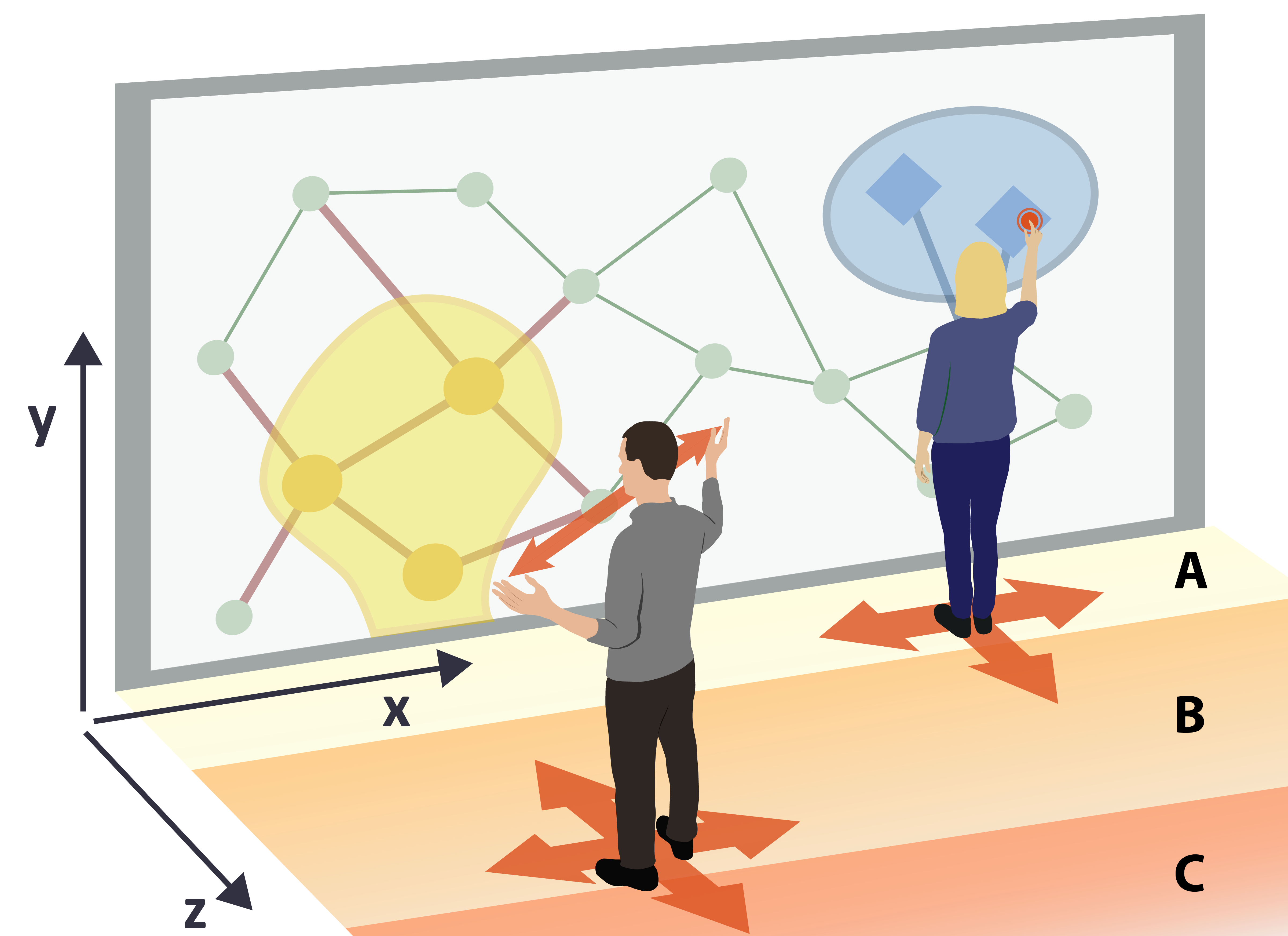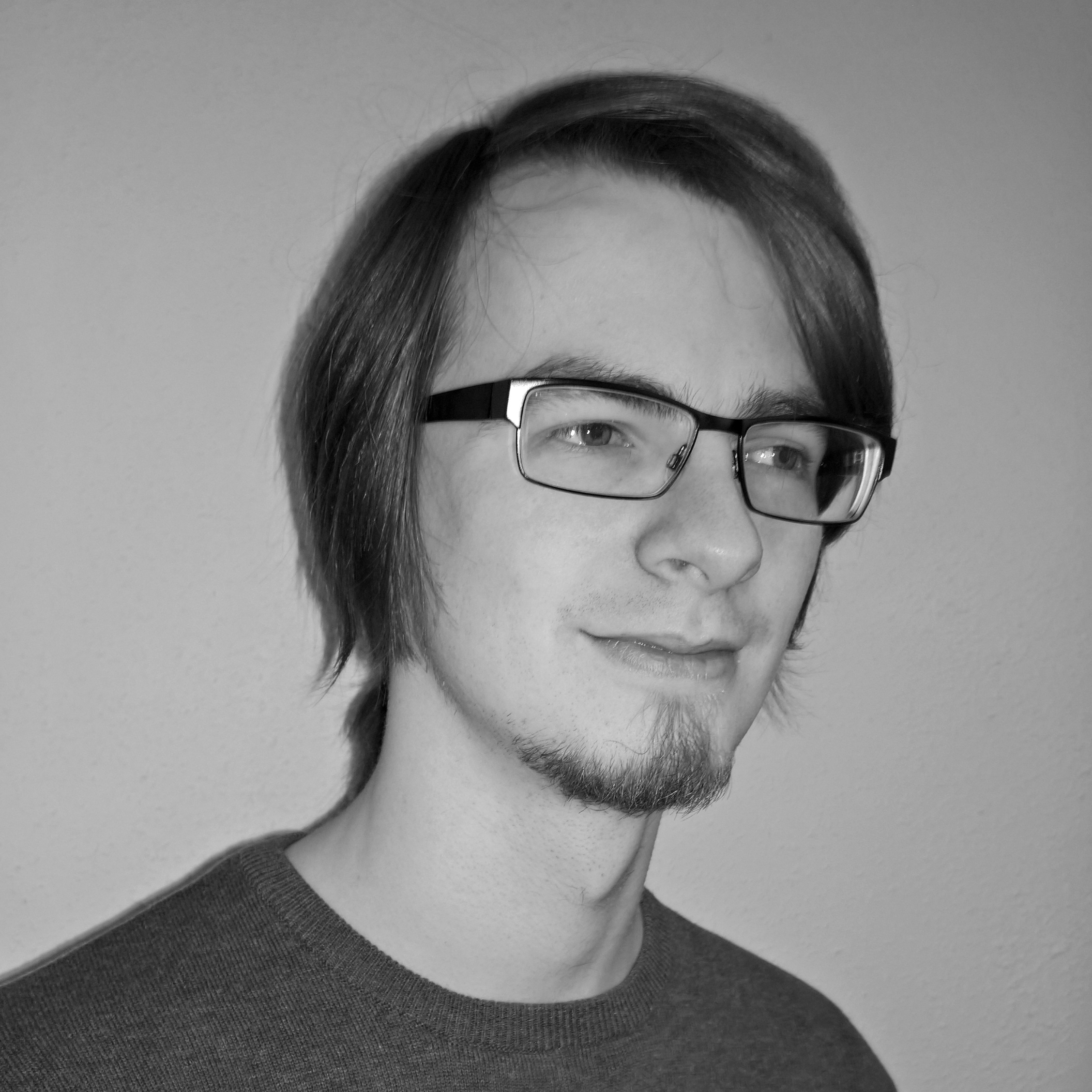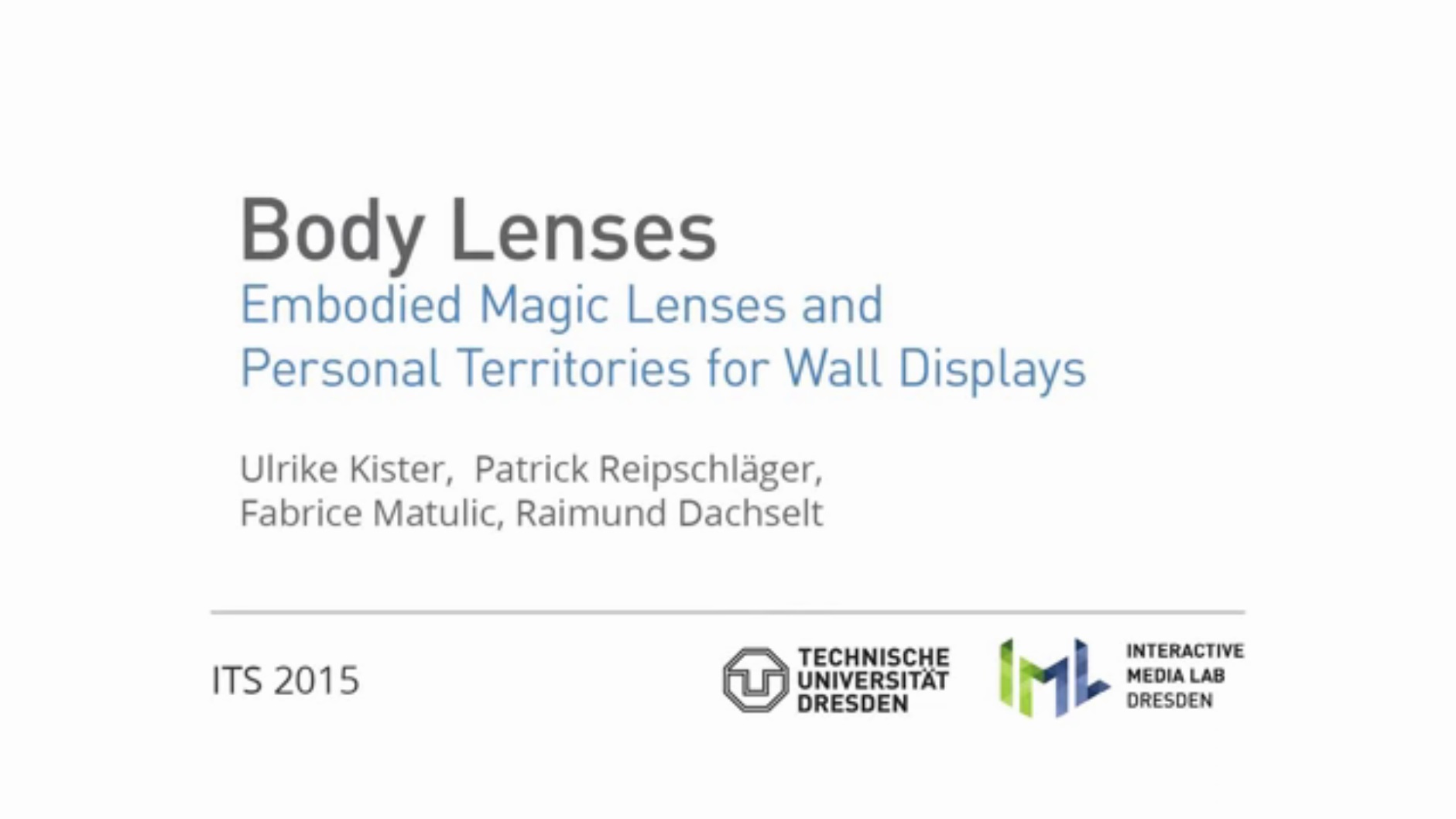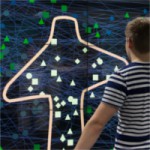
Magic lenses are popular tools to provide locally altered views of visual data. In this project, we introduce the concept of BodyLenses, special kinds of magic lenses for wall displays that are mainly controlled by body interactions. We present a comprehensive design space and investigated a number of design alternatives proposing solutions for lens positioning, dynamic shape modification, distance-based parameter mappings and the use of BodyLenses as portable tool belts. We demonstrate the practicality of our novel concepts with four realised application scenarios and lay the foundation for future research and systems based on body-driven lenses.
Design Space

We define the term BodyLens as any type of personal, body-controlled magic lens used on a vertical display. Thus, the magic lens can apply any function to a user-centred region of interest, including selection, zooming, focus+context, advanced visual modifications, or semantic changes to the data. “Body-controlled” refers to a) any type of body movement with regard to the fixed display as well as b) gestures of any body part — most prominently arms and hands, but also head, legs and feet — and any combinations thereof. Furthermore, provided the display is an interactive surface, c) direct interaction on the display is also possible, e.g. by means of multi-touch, pen or tangible input. While horizontal movements along the wall display typically influence the position of the lens, distal movements, body gestures and direct interactions may influence any other parameter associated with the lens.
In our design space, we focus on
- the appearance of the lenses,
- their magic lens function,
- possible interactions to influence position, shape, and function, and
- their use in multi-user contexts.
This project was in part funded by the DFG project GEMS (DA 1319/3-1) and the Excellence Initiative of the German Federal and State Governments (Institutional Strategy, measure ‘support the best’).
Related Publication
@inproceedings{Kister2015_BodyLenses,
author = {Ulrike Kister and Patrick Reipschl\"{a}ger and Fabrice Matulic and Raimund Dachselt},
title = {BodyLenses - Embodied Magic Lenses and Personal Territories for Wall Displays},
booktitle = {Proceedings of the 2015 ACM International Conference on Interactive Tabletops and Surfaces},
year = {2015},
month = {11},
isbn = {978-1-4503-3899-8},
location = {Funchal/Madeira, Portugal},
pages = {117--126},
numpages = {10},
doi = {10.1145/2817721.2817726},
url = {http://dx.doi.org/10.1145/2817721.2817726},
acmid = {2817726},
publisher = {ACM},
address = {New York, NY, USA},
keywords = {Body-centric interaction, embodied interaction, territoriality, magic lenses, proxemics}
}List of additional material
Related Student Theses

BodyLenses for Exploration of Information Visualization on Interactive Display Walls
Robert Morawa November 23rd, 2015 until May 1st, 2016
Supervision: Raimund Dachselt, Ulrike Kister

Christoph Plagge June 15th, 2015 until September 7th, 2015
Supervision: Raimund Dachselt, Patrick Reipschläger, Ulrike Kister

Collaborative Mind-Map Creation Using Personal Lenses on Interactive Display Walls
Maximilian Gräf July 1st, 2015 until September 23rd, 2015
Supervision: Patrick Reipschläger, Ulrike Kister, Raimund Dachselt

Menus for Magic Lenses at Interactive Display Walls
Lars Beck July 1st, 2015 until September 23rd, 2015
Supervision: Raimund Dachselt, Patrick Reipschläger, Ulrike Kister

Analysis of Multivariate Data on Maps Using BodyLenses
Marc Satkowski November 21st, 2016 until June 3rd, 2017
Supervision: Ulrike Kister, Raimund Dachselt


